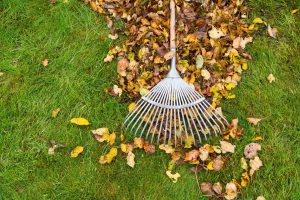- Denver Branch: (303) 320-7500
- Rocky Ford Branch: (719) 254-7469
-
Now Offering Delivery!
-
Our offices will be closed Easter Monday 4/21

As we all know, winter lawn prep is extremely important as the harsh winters can be extremely detrimental to the overall health and well-being of a home lawn, recreational sports fields, or native grass area. Even though our native soils can be full of nutrients needed for plant growth, these nutrients aren’t always available within the soil.
Many major nutrients are bound to soil particulates that are not easily available for use by the plant. To ensure your plant has readily available nutrients, a winter fertilizer application is recommended to ensure lawn and overall plant health.
(N) Nitrogen is important to plants by promoting leaf and color development. By applying Nitrogen, the plant will be able to use and store this nutrient through the winter, helping the plant survive and allows for immediate growth in the spring when soil temperatures reach what the plant needs to break dormancy.
(P) Phosphorus is another very important nutrient in the growth cycle of grass and other plants, but not as important in the winter. This is because plants go dormant during the colder months. Phosphorus impacts the cell division and cell regrowth, so this number is more important in the spring when plants are actively growing.
(K) Potassium content will feed the roots throughout with winter. This will help promote a larger root system which in turns makes the grass more drought tolerant in not only the winter but into the summer months as well.
21-0-21 winterization fertilizer
This fertilizer is 75% slow release nutrient blend that ensures available food throughout the long hard winter. There is also 2% Iron, which helps with spring green up once the grass is watered.
Apply this product at 4-5 pounds of fertilizer per 1000 square feet for 1 pound of Nitrogen and 1-pound potassium. This 50 pound bag will cover 10,500 square feet. Apply before rain, snow, or irrigate generously after each application.
For safety keep out of reach of children and pets.
This fertilizer will promote plant health throughout the winter and into the spring. By feeding the roots and providing nitrogen for your lawn, you will be giving your lawn a better chance of survival through the winter and a healthier lawn in the spring and summer.
Cut your lawn shorter than usual. A shorter lawn promotes root growth. This time of the year is a great time to de-thatching. Power raking is a great option along with aerification. Following de-thatching, a winter over-seeding application would be a great idea to get a jumpstart on the spring.
See next month’s news for more information on winterizing your lawn.
Or email Dillon for more information or to discuss your lawn
4300 North Monaco St Pkwy Denver, CO 80216
098 S. 12th Street
Rocky Ford, CO 81067
Copyright © 2025 AVSeeds. All Rights Reserved